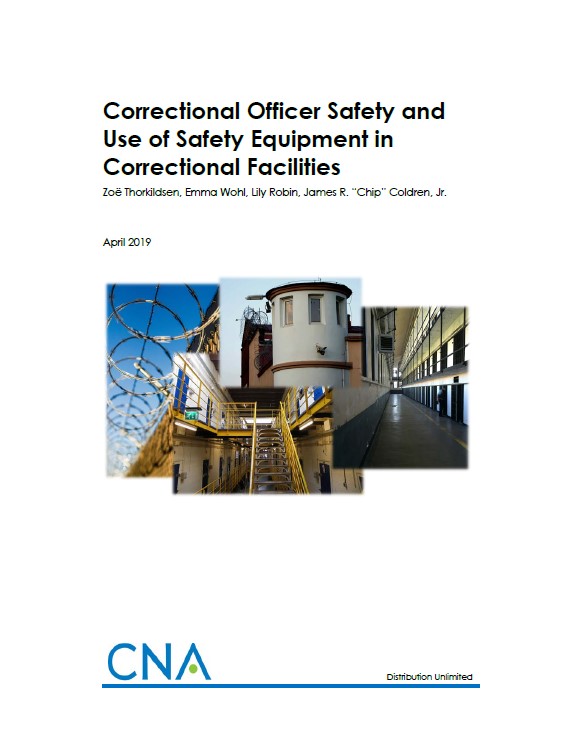Correctional officers work in dangerous environments that increase their risk of injury. Their rates of nonfatal injuries are among the highest across all occupations (Bureau of Labor Statistics 2016). In recent decades, technology in correctional settings has advanced significantly, and new equipment and devices to improve correctional officer safety have become increasingly prevalent. However, equipment deployment across facilities varies. In addition, little is known about the specific equipment modalities used in different facilities, the effectiveness of this technology, or how correctional officers and other facility personnel perceive safety equipment.
In 2010, the Government Accountability Office (GAO) (2011) surveyed the Federal Bureau of Prisons (BOP) and correctional departments in 14 states to document available correctional officer safety equipment, review the policies governing the use of these technologies, and assess perceptions of their effectiveness among correctional officers, management personnel, and union members. The GAO identified a variety of safety equipment types used in federal prisons. Correctional officers working within the secure perimeter of BOP institutions are generally required to carry a radio, body alarm, and keys while on duty. BOP policy also gives correctional officers the option to carry a flashlight, latex or leather gloves, and stab-resistant vests. Handcuffs are also generally optional, unless the correctional officer works in certain posts, such as controlling offender movement. Other types of safety equipment not routinely carried by federal correctional officers include pepper spray, batons, and conducted energy devices.
However, the data collection and analysis methods used in the GAO study had two limitations. First, the 14 state departments of corrections the GAO surveyed were selected non-randomly. As such, their findings regarding state facilities are not generalizable. Second, although they sought officials’ opinions about the effectiveness of the safety equipment, the GAO report did not present an objective empirical assessment to substantiate the officials’ views. As described in detail below, CNA’s proposed study builds on the GAO study. We propose conducting a further exploratory study to objectively determine the effectiveness of safety equipment in a sample of correctional facilities, along with a content analysis of policies and procedures related to correctional officer safety equipment.
As noted in the 2011 GAO report, the field requires more research on the use and effects of safety equipment by correctional officers. CNA’s study addresses this gap by analyzing safety equipment use in a sample of seven adult correctional facilities in the United States in depth. We provide preliminary evidence about the association between the use of safety equipment and correctional officer safety, as measured by on-the-job assaults and injuries. In addition, we summarize how safety equipment is used situationally, as well as the policies and procedures that guide the use of this equipment across the eight study sites. Our research improves the evidence base
related to safety equipment efficacy and will guide future research and technical assistance opportunities.
This document represents the best opinion of CNA at the time of issue.
This project was supported by Award No. 2013-R2-CX-K002, awarded by the National
Institute of Justice, Office of Justice Programs, U.S. Department of Justice. The opinions, findings, and conclusions or recommendations expressed in this publication/program/exhibition are those of the author(s) and do not necessarily reflect those of the Department of Justice.
Details
- Pages: 40
- Document Number: IRM-2018-U-018376-Final
- Publication Date: 4/1/2019
